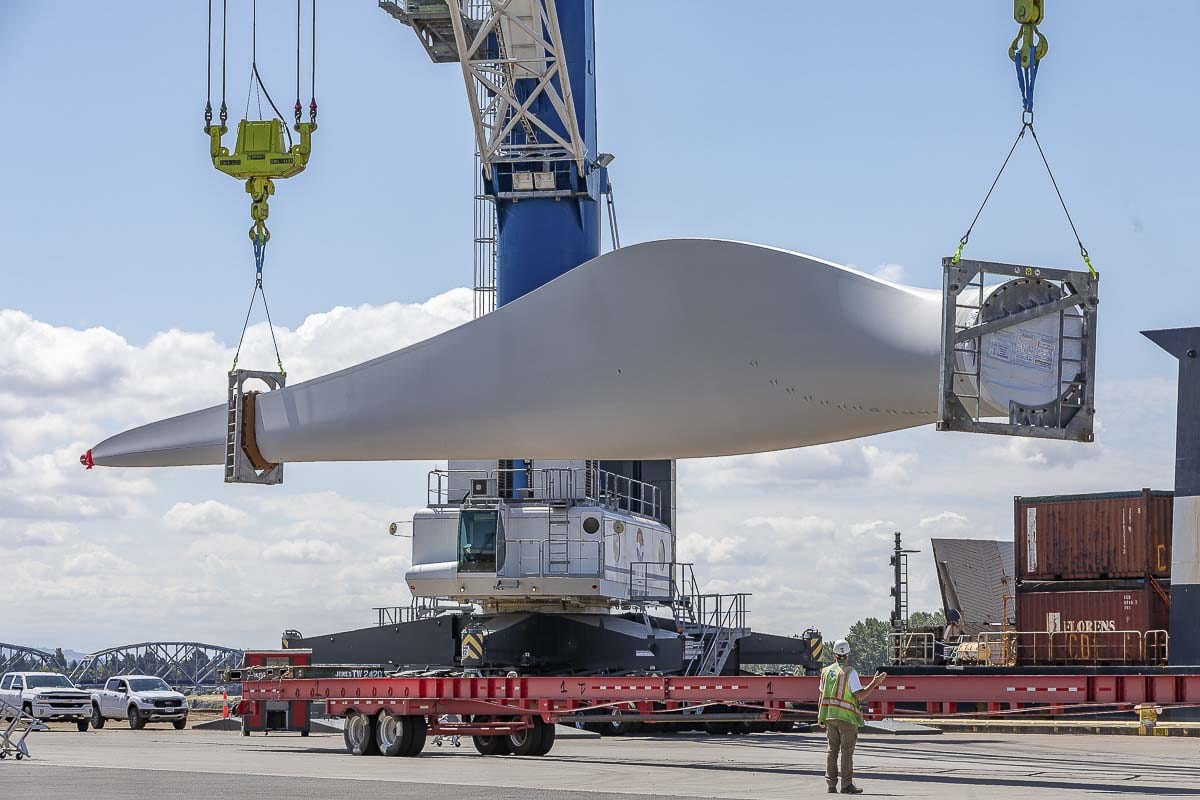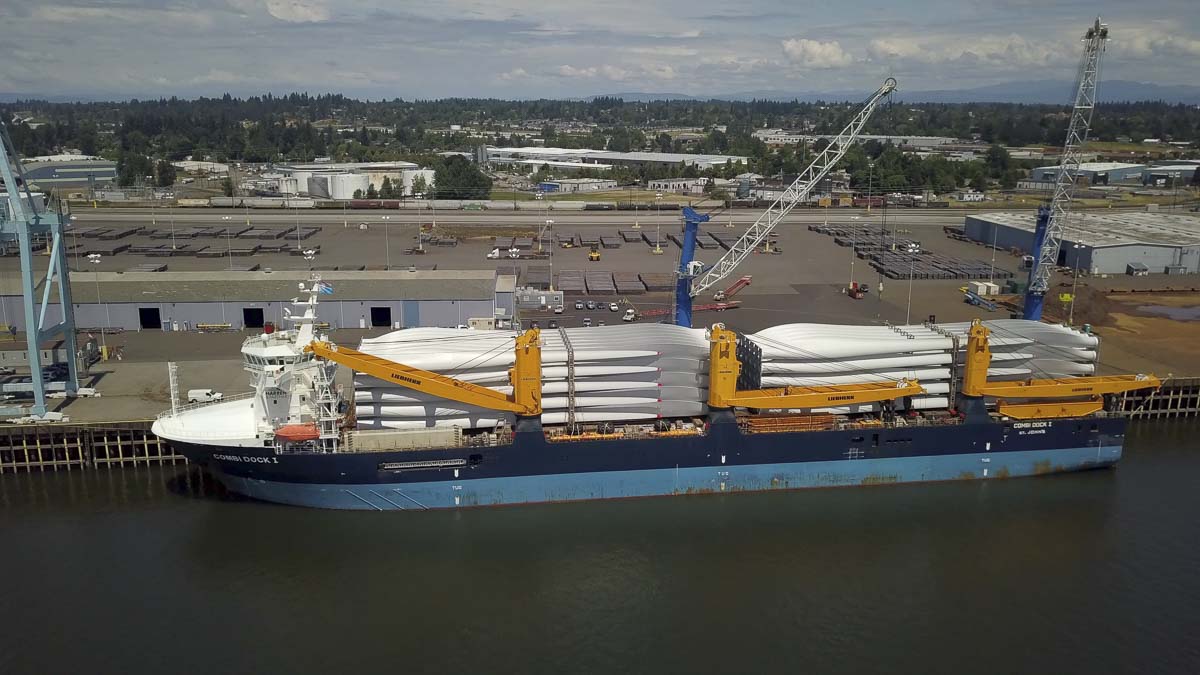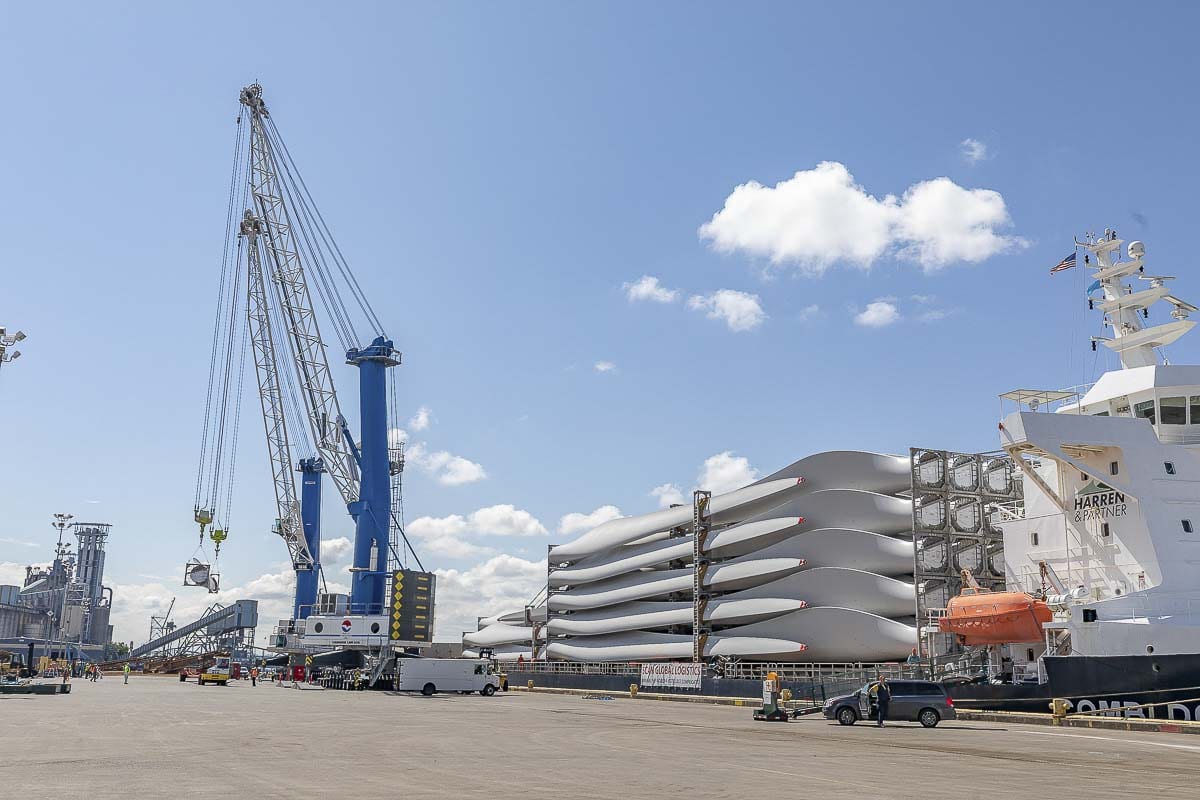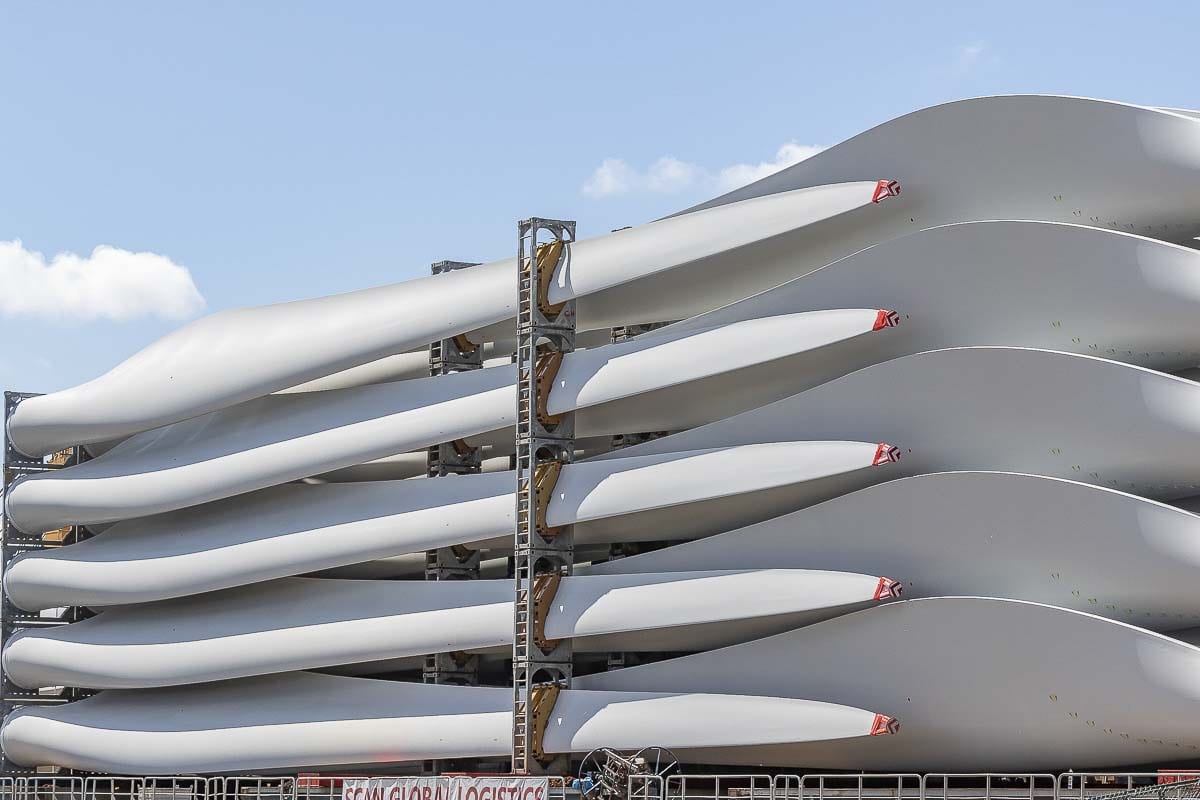Nearly 200 blades bound for Dayton, WA from Tarnto, Italy began to be unloaded at the Port this week
VANCOUVER — Over the next five days, longshoremen at the Port of Vancouver USA will offload 198 brand-new wind turbine blades; the largest shipment ever.
It is a sight of awe-inspiring proportions. The blades dwarf everything except the cranes, being as long as a 14-story building is tall. On board the ship Combi Dock I, the blades are stacked three high in the hold, and a towering five high on deck.

Each 160-foot blade was constructed in Taranto, Italy. Made of fiberglass, plastics, carbon, and other composites, the blades each weigh close to 20,000 pounds.
“This is the beginning of a great adventure for these blades,” said Port Commissioner Jerry Oliver. “They are a significant step in the repowering of an existing wind farm. The fact that this ship came from Italy, it is an underscore for the fact how important trade is to not only this region, but to the entire United States.”
Crews, using the port’s two massive Liebherr Mobile Harbor cranes, will move each blade to enormous flatbed trucks for transport to their new home near Dayton, WA. There, they will update a wind farm generating power for 72,000 homes.

“Wind is the largest source of new [renewable] electricity generation in the U.S.,” said Chante Condit-Pottol, communications specialist for the company Vestas, which produced the blades. “The industry as a whole is just growing exponentially. That’s really powering what we like to call the ‘American Energy Economy.’”
Denmark-based Vestas is the world’s largest supplier of wind turbines and wind energy related technology. Last year, they spent $1.3 billion in the U.S. alone, on new technologies in renewables. They design and supply over 13 percent of the wind power on the planet.
In addition to the blades, Vestas will also supply the nacelles, or gear boxes, that sit at the top of each wind turbine tower. Made in Colorado, the nacelles have also been updated with technology 12 years newer than those currently in Dayton.
PacifiCorp, the partly Portland-based company building the turbines from the Vestas blades, will assemble the towers with the new blades starting now and going through November of 2019.
The Marengo Wind Project, as it is known, sits close to the city of Dayton in southeastern Washington. The blade upgrades, will bring a 35-percent increase in power generation for the 12-year-old wind farm.

Each blade is roughly 40 feet longer than its predecessor; thus allowing more wind to push it, and push it faster.
“There’s a huge demand right now for turbines, for blades, and so they’re sourcing all over the world right now to deliver the energy projects that were building for our customers by the end of 2020,” said Timothy Henstreet, managing director at PacifiCorp. “We’re predominantly a rural utility serving rural communities, so we’re really excited that projects like this can go out and benefit those communities directly.”
PacifiCorp’s Energy Vision 2020, of which the upgrade to Marengo is a large part, aims to increase the wind energy the company generates by 50 percent by 2020. At Marengo, this looks like replacing 351 blades on 117 towers, each 200-feet in height.

The upgrade comes at a cost of $200 million; a small part of the total cost of Energy Vision 2020, which is estimated at $3 billion.
The port expects more shipments like this in the near future, even though this may be the largest this year, Oliver said.
“There’s so many things that happen here at the port,” Oliver said. “This is what we do. We create jobs for our community, in so many different areas. That’s what I get excited about.”




